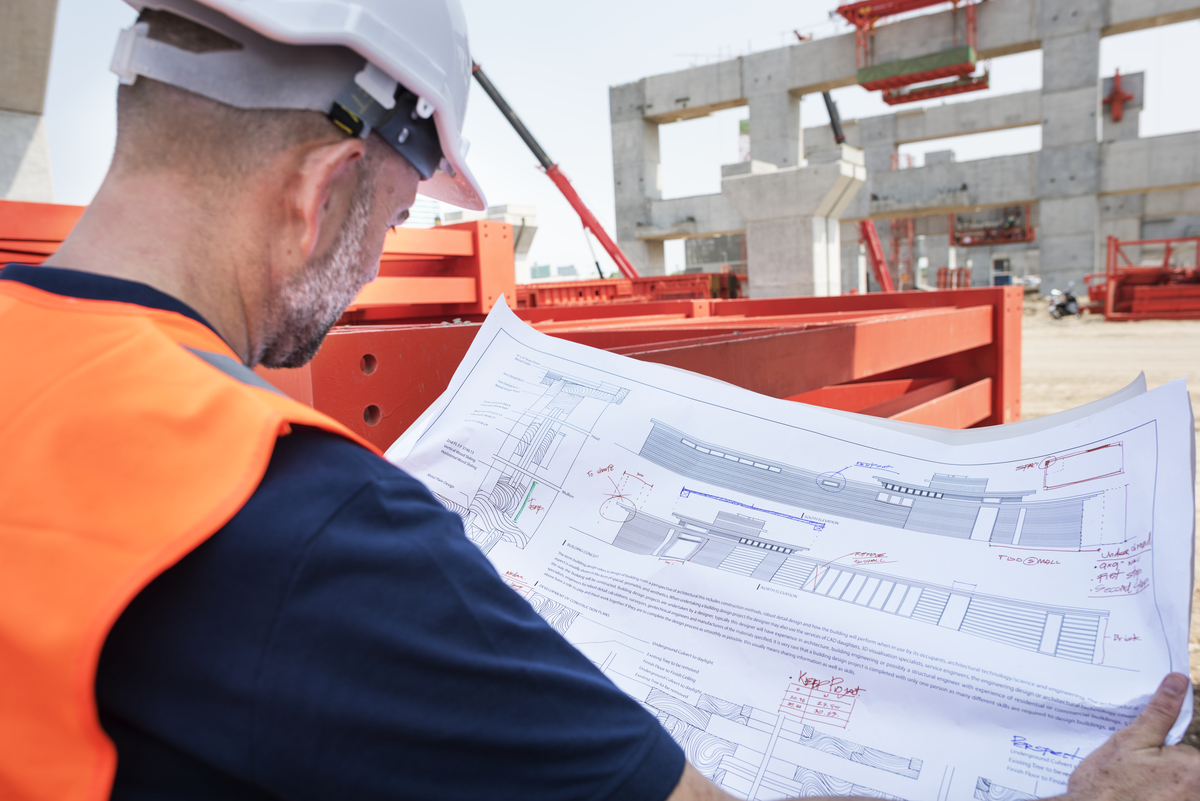Exclusive Neuroject Article: Effective risk management is essential for project success in the dynamic world of construction. The likelihood of difficulties and setbacks rises as initiatives get more complicated and ambitious. This article explores the top 21 construction risks that might jeopardize projects and provides doable solutions.
We examine risks ranging from monetary uncertainty and regulatory challenges to technological advancements and labor shortages, drawing on industry expertise and empirical data. Stakeholders can strengthen their projects against potential hazards, assuring timely completion, cost containment, and stakeholder satisfaction, by comprehending and tackling these risks head-on.
This article provides project managers, contractors, and stakeholders with a detailed road map for navigating the complex world of construction risks in management and coming out on the other side with positive results.
Table of Contents
Introduction
The planning, execution, and management of construction projects is a complicated process involving numerous interrelated processes, resources, and stakeholders. The idea of construction risks arises as a crucial framework for locating, evaluating, and minimizing any risks that may obstruct project achievement in this complex environment. This proactive approach recognizes that risk is a necessary component of any construction project and that project teams may protect timelines, budgets, and overall project goals by properly managing these risks.
Construction risks are the methodical process of identifying and assessing potential dangers that may surface throughout different project lifecycle phases. These dangers could be caused by a variety of things, including poor design, unforeseen site circumstances, problems with regulatory compliance, supply chain interruptions, labor shortages, difficulties with the weather, and more. These hazards could develop into expensive delays, financial overruns, and compromised safety if they are not addressed.
A variety of tactics that strike a balance between prevention, mitigation, and contingency planning is necessary to address these risks. In order to identify hazards early and develop efficient mitigation strategies, collaboration across stakeholders, including owners, contractors, architects, engineers, and subcontractors, is essential. This entails thorough analysis, data-driven judgment, and application of best practices. Accurate risk assessment can be improved by using cutting-edge technology like Building Information Modeling (BIM) and predictive analytics.
The main approaches that enable project teams to identify potential risks, prioritize them based on their potential impact, and create workable plans to limit their negative impacts are examined in this investigation of construction risks and their resolution strategies. Construction projects can negotiate uncertainty with confidence by establishing a culture of proactive risk management. This will ensure smoother execution, better resource allocation, and ultimately the realization of successful outcomes.
Suggested article for reading: BIM in Construction
Common Construction Risks Overview
Numerous hazards that can have a substantial impact on project timetables, costs, and overall success are intrinsic to the construction industry. These dangers result from the dynamic and complicated character of construction projects, which include a variety of external elements, detailed processes, and numerous stakeholders. These hazards, which can appear at any stage of a construction project and require careful risk management tactics for effective mitigation, range from financial uncertainty to regulatory compliance difficulties.
Inadequate construction risks can have disastrous effects that resonate throughout the lifecycle of a project. Budget overruns, which occur when unplanned expenses are incurred because of difficult circumstances or inaccurate cost estimation, are one of the most direct effects. Another negative impact is project completion delays, which can be caused by things like bad weather, a labor shortage, or poor design. Such delays can damage a company’s reputation for meeting deadlines in addition to increasing expenditures.
Additionally, failing to follow local laws and ordinances may result in fines, project closures, and other legal issues. Construction risks can increase as a result of poor stakeholder alignment and communication, which can fuel conflict and impede decision-making. Failure to take environmental and sustainability concerns into account may not only harm the environment but also increase the risk of lawsuits, project delays, and reputational harm.
In light of these possible outcomes, proactive risk management techniques become essential to successfully navigating the complexity of building projects. Construction sector stakeholders can protect their projects from the negative effects of poor risk management by identifying and analyzing risks early, putting effective measures into place, monitoring ongoing changes in the environment, and doing so.

Financial and Budget Risks
Construction projects frequently face financial and budgetary risks, which could hurt the final results of the project. These risks cover a wide range of problems, such as budget overruns, incorrect cost projections, and payment-related disagreements. Budget overruns happen when the actual project costs surpass the initial budget forecasts, which puts pressure on the budget and delays the project.
On the other side, inaccurate cost estimations are the result of a poor evaluation of the project’s constituent parts, which results in unplanned costs that tax the available resources. Payment conflicts result from differences over payment terms between contractors, subcontractors, and project owners, which could impair project continuity and result in legal issues.
Project management necessitates a diverse strategy to properly handle these financial construction risks. A thorough review of all project components, including personnel, materials, equipment, and potential dangers, is required for accurate budgeting. Budget overruns can be lessened by putting in place a clear budgeting process that takes into account probable scenarios.
Equally important are cost-tracking systems that enable real-time monitoring of expenditures in comparison to the budget. Regular evaluations aid in the early detection of variances, enabling rapid corrective actions to maintain costs in line with estimates to manage construction risks. Strong contract negotiation tactics are also essential to guarantee that all project stakeholders have a clear understanding of the payment conditions, work scope, and obligations. Contracts should be carefully drafted to reduce payment issues and legal challenges.
Schedule and Timeline Risks
The control of schedule and timeline hazards is one of the key difficulties in project management for the construction industry. These dangers cover a wide range of problems, such as project delays, disturbances in the timetable, and unforeseen timeline difficulties. Weather conditions, unforeseen site circumstances, changes in the project’s scope, and supply chain disruptions are just a few of the many potential causes of delays.
Each delay may have a domino effect on related jobs, increasing costs, causing disagreements over contracts, and alienating stakeholders. To guarantee project success and on-time delivery, these risks must be effectively identified and mitigated.
Project managers use a variety of tactics to reduce these construction risks, mostly revolving around efficient scheduling methods and contingency planning. The creation of a well-structured project plan that lists activities, milestones, and dependencies is one of the key strategies. Making use of project management software can help managers make realistic schedules, allowing them to monitor progress, spot any delays, and alter timelines as necessary.
Additionally, using methods like the Critical Path Method (CPM) and the Program Evaluation and Review Technique (PERT) enables a thorough evaluation of the interdependencies between project activities, assisting in the identification of crucial tasks that have a substantial impact on the project’s overall duration.
Contingency planning is a crucial part of lowering construction risks in the timeline for construction. This entails anticipating potential dangers and developing backup strategies to quickly handle them. Maintaining a buffer period in the project timeline, for instance, can assist in accommodating unforeseen delays.

Design and Planning Risks
Design and planning construction risks are significant obstacles that can cause delays, cost overruns, and compromised project outcomes. Sources of such hazards include deficiencies in planning, scope modifications, and poor design. Errors or omissions in architectural and engineering blueprints are examples of design faults, which can result in structural issues, safety concerns, and rework.
Inadequate planning results in ineffective operations and unforeseen problems during construction by involving insufficiently comprehensive project plans, insufficient resource allocation, and unrealistic schedules. Workflows can be disrupted, expenses can rise, and project deadlines might be extended as a result of scope changes brought on by changing customer expectations or inadequate initial scoping. These dangers emphasize the need for proactive management to guarantee project success.
A multifaceted strategy is necessary to reduce these hazards. The deployment of thorough design review processes is one efficient tactic. Regular and in-depth reviews of design blueprints by qualified experts assist find and fix any problems before construction starts. This improves project quality and lessens the possibility of expensive rework. Planning with others is also essential.
Shared knowledge of the project’s objectives, specifications, and difficulties is fostered by the early participation of all stakeholders—architects, engineers, contractors, and clients. Through the course of the project’s lifetime, this method makes communication, construction risks identification, and group problem-solving easier.
Another important solution is a clear scope description. The likelihood of scope changes and misunderstandings is reduced with the use of precise and thorough scoping documents that include project objectives, deliverables, and specifications.
Regulatory and Compliance Risks
Construction projects are subject to regulatory and compliance construction risks because of the potential repercussions of disregarding local laws, permits, and building rules. Non-compliance can result in exorbitant delays, fines, and reputational harm. Due to the constantly changing nature of building regulations and the complex web of rules that regulate various components of a project, these construction risks are more pronounced. Failure to successfully navigate these regulatory waters may cause project delays and financial disasters, which would undermine the endeavor’s success as a whole.
The most important step in reducing these hazards is to stay current with regulatory standards. Strong procedures for tracking changes in local laws and building codes must be established by project managers and teams working on construction projects. This entails ongoing communication with pertinent governmental organizations, business groupings, and legal professionals who can offer viewpoints on developing standards. Adding a specialized compliance team to the project structure can also aid in making sure that every aspect of the project complies with the most recent legal requirements.

Environmental and Sustainability in Construction Risks
Various risks associated with environmental effects, sustainability goals, and resource management are present in modern building projects. To address these issues and encourage ecological responsibility while reducing building hazards, a systematic strategy is required. Consider the following important points:
Environmental Impact and Sustainability:
- The ecological footprint of the building industry can end in habitat loss, pollution, and resource depletion, endangering ecosystems.
- Ignoring these risks may result in legal penalties, damage to one’s reputation, and environmental harm.
Environmental Impact Evaluation:
- For a better understanding of potential negative effects on ecosystems, comprehensive environmental impact assessments are essential.
- Project managers can develop mitigation strategies and follow environmental rules with the help of these analyses.
Sustainable Construction Methods:
- Using sustainable construction methods is crucial to lessening projects’ negative environmental effects.
- Energy-efficient design, renewable energy sources, and green building standards are some strategies that can considerably reduce resource usage and emissions.
Waste Reduction Strategies:
- Recycling and appropriate garbage disposal reduce the amount of waste sent to landfills and benefit the environment.
- These actions support sustainability objectives, demonstrate environmental stewardship, and may result in long-term cost benefits.
Eco-Friendly Materials:
- Construction has a smaller environmental impact when it uses sustainable resources.
- Conventional building materials frequently cause habitat damage, carbon emissions, and resource depletion.
Material Selection:
- Choose environmentally friendly materials like recycled goods, quickly renewable resources, or low-emission substitutes.
- This decision not only lessens the project’s environmental impact but also improves indoor air quality and shortens environmental consequences over the long run.
Benefits of Proactive Approaches:
- Construction hazards can be decreased by implementing sustainable building practices, waste reduction programs, and eco-friendly materials.
- These actions show a dedication to environmental stewardship and open the door for more environmentally friendly and economically sound construction methods.
The construction industry may traverse the intricacies of environmental and sustainability concerns by addressing construction risks through detailed evaluations, sustainable procedures, and thoughtful material choices. Such methods not only reduce hazards but also promote a more ecologically and economically responsible construction sector.
Suggested article’s for reading: Wastes in Lean Construction
Stakeholder and Communication Risks
Clear communication and effective stakeholder management are essential to the success of any project because they reduce the construction risks associated with misunderstandings, divergent stakeholder interests, and low engagement. Miscommunication can slow down the process and cause misconceptions, while unresolved stakeholder conflicts can cause initiatives to fail. Lack of support and opposition may be the outcome of poor involvement.
Stakeholders must be meticulously mapped out to manage these difficulties, and clear communication lines and conflict resolution plans must be constructed. Projects can preserve stakeholder support, improve transparency, and guarantee more seamless project execution by putting these steps into place.
Stakeholder and Communication in Construction Risks:
- Miscommunication: Poor routes and methods of communication can cause misunderstandings, false information, and confusion among stakeholders. Project delays, rework, and a decline in confidence can be brought on by unclear and inconsistent messaging.
- Conflicting Stakeholder Interests: Stakeholders frequently have opposing agendas and interests. Project scope adjustments, resistance, and even project failure can occur as a result of failing to recognize and manage these competing interests to manage construction risks.
- Poor Engagement: A lack of buy-in and support for the project might result from inadequate involvement with stakeholders. Ignoring stakeholder input and participation may lead to opposition, bad press, and reputational harm.
Tips for Effective Stakeholder Management:
- Stakeholder Mapping: Identify important stakeholders and classify them according to their motivations, sway, and prospective influence over the project. This enables the customization of communication and engagement tactics to manage construction risks.
- Transparent Communication: Create strategies for open lines of input as well as regular updates and progress reports. Transparency fosters trust and informs stakeholders.
- Conflict Resolution: To handle disagreements and opposing interests, develop a strong conflict resolution framework. Finding common ground and preserving stakeholder support can be accomplished through mediation, negotiation, and compromise to manage construction risks.

Technological and Innovation in Construction Risks
Organizations frequently run against hazards in the dynamic world of technological innovation, which might obstruct growth and success. Miscommunication, divergent stakeholder interests, and low involvement stand out as crucial roadblocks that necessitate strategic consideration of these hazards.
Miscommunication can occur for a number of reasons, including insufficient project documentation, language hurdles, and disparities in technical understanding. This may result in a misinterpretation of the requirements, false assumptions, and ultimately, poor ideas. Projects can be derailed, money wasted, and cooperative efforts might be hampered by these misalignments.
Conflicting Stakeholder Interests represent another significant construction risks. Managing conflicting interests becomes a sensitive issue when different stakeholders have different objectives, goals, and expectations. These disagreements can hinder innovation by causing project delays, scope expansion, and disagreements over critical choices if they are not resolved.
Poor engagement raises concerns about properly involving stakeholders at every stage of the innovation lifecycle. Disengaged stakeholders, such as team members, business partners, and end users, hinder feedback loops and limit the integration of important knowledge. This may lead to solutions or goods that fall short of market demands.
Effective Stakeholder Management, transparent communication, and conflict resolution are essential strategies for mitigating these construction risks and ensuring successful technological innovation.
Stakeholder Management: Be sure you regularly identify and involve all relevant parties, including project sponsors and end users. To promote a sense of ownership and alignment, keep communication channels open and involve stakeholders in decision-making.
Transparent Communication: Establish effective channels of communication to share project objectives, developments, and difficulties. To close technical knowledge gaps, use simple language and illustrations. Transparency increases trust and lessens the possibility of misunderstandings.
Conflict Resolution: Create a methodical strategy for resolving disputes, and encourage all parties to voice their concerns honestly. Find a middle ground by concentrating on shared objectives and coming up with win-win solutions. These discussions can be facilitated by an impartial mediator.
The success of projects can be put at risk by technology and innovation construction risks related to insufficient engagement, opposing stakeholder interests, and miscommunication. These construction risks can be reduced, increasing the possibility of successful innovation, by using good stakeholder management, open communication, and conflict resolution techniques.
Labor and Workforce in Construction Risks
Businesses and organizations are continuously looking for new chances for innovation in the ever-changing technology landscape of today. However, innovation carries built-in dangers that can impede development and have an adverse effect on success. Miscommunication, competing stakeholder interests, and low involvement are the three main dangers to take into account.
Miscommunication: Misunderstandings, project delays, and even the inability to attain desired results can result from poor communication. Technical language can readily mislead non-technical stakeholders in innovation projects requiring complicated technologies, resulting in misplaced expectations and resource waste.
Conflicting Stakeholder Interests: Innovation projects frequently include a variety of stakeholder groups with a range of interests. These competing interests may lead to conflicts, problems with resource distribution, and a lack of support for the project’s objectives. The inability to resolve these problems may cause a project to stall or be abandoned.
Poor Engagement: Innovation efforts can be severely hampered by internal and external stakeholders’ lack of engagement. Lack of input and feedback can result in poor prototypes, the omission of important features, and the opportunity for improvements.
Effective stakeholder management, open communication, and conflict resolution techniques are essential to reducing these construction risks and promoting successful innovation.

Effective Stakeholder Management:
- Determine Important Stakeholders: All necessary parties, including end users, management, and technical experts, should be precisely identified and included in managing the construction risks.
- Recognize the Needs of Stakeholders: Gather feedback from stakeholders on a regular basis to make sure their demands are recognized and taken into account during the innovation process to manage construction risks.
- Developing Relationships: Create enduring connections with your stakeholders that are built on empathy, active listening, and trust.
Communicating Openly:
- Reduce Complex Technical Terms: Transform difficult-to-understand technical concepts into language that non-technical stakeholders can understand to manage construction risks.
- Continual Updates: Regularly update stakeholders on the project, highlighting accomplishments and issues, to retain participation and create transparency.
- A Two-Way Conversation: Encourage open communication between the project team and stakeholders, allowing for feedback and rapidly resolving issues to manage construction risks.
Conflict Resolution:
- Mediation: Use impartial mediators to resolve disputes, making sure that the interests of all parties are recognized and balanced.
Facilitate dialogues that encourage compromise in order to settle differences of opinion and advance the project to manage construction risks.
Clear Governance: To avoid protracted disagreements and indecision, establish a clear hierarchy and decision-making process.
It takes a comprehensive strategy that prioritizes good communication, stakeholder participation, and conflict resolution to embrace innovation while minimizing its associated dangers. Organizations can overcome the difficulties of technological innovation and improve their chances of successful project outcomes by putting these methods into practice.

Material and Supply Chain in Construction Risks
Organizations encounter a wide range of issues when it comes to material and supply chain management in today’s international business environment. These difficulties include material scarcities, quality problems, and supply chain interruptions, all of which have a negative influence on operations, financial success, and client happiness.
Material Shortages: Trade disagreements, natural calamities, market swings, and geopolitical conflicts can all lead to a shortage of raw materials. Electronics and the automobile industries, which depend on specific materials, are particularly susceptible to severe shortages.
Quality Issues: Subpar materials can cause production holdups, flaws, and safety construction risks. Insufficient quality control procedures, poor supplier evaluations, and a lack of supply chain transparency are all factors that contribute to this risk.
Supply Chain Disruptions: Transportation bottlenecks, strikes, political unrest, and pandemics can all cause disruptions. The COVID-19 pandemic, which had an impact on several industries all around the world, illustrated how broad these disruptions are.
Offer tactics like supplier relationships, inventory management, and varied sourcing:
Diversified Sourcing: Dependence on one supplier raises vulnerability. By diversifying their supply base across several countries and regions, businesses can reduce these construction risks. This guarantees a fallback plan in the event that one supply chain is disrupted.
Inventory Management: It’s crucial to keep inventory levels at ideal levels. Through precise demand forecasts and flexible inventory techniques, it is possible to strike a balance between storing surplus stock to prevent shortages and maintaining lean inventory to save costs.
Supplier Connections: Building trusting connections with suppliers encourages candid communication and teamwork. In times of difficulty, closer links can result in cooperative problem-solving and early warnings of impending disturbances.
Businesses can increase their resilience and long-term sustainability by taking proactive measures to manage these material and supply chain risks. Implementing a variety of sourcing options, improving inventory management procedures, and developing strong supplier relationships not only reduce risks but also put firms in a position to take advantage of opportunities in a volatile market.
Suggested article for reading: Top 10 Green Building Materials
Contractual and Legal Risks
Contractual and legal construction risks are a big barrier in the complicated world of corporate transactions and agreements. Contract disputes, legal claims, and bad contract provisions are common potential dangers for businesses. It is essential for developing fruitful corporate partnerships and reducing potential liabilities to comprehend and mitigate these construction risks.
Risks Tied to Contract Disputes, Legal Claims, and Inadequate Contract Terms:
Contract Disputes: Conflicts between the parties to a contract may arise as a result of ambiguities, misinterpretations, and divergent expectations. Conflicts of this nature may cause delays, higher costs, and even lawsuits, harming corporate ties and reputation.
Legal Claims: Due to responsibilities not being met, misrepresentations being made, or failure to comply with legal requirements, parties to inadequate contracts may be subject to legal claims. This may result in monetary loss, legal costs, and reputational harm.
Inadequate Contract Terms: In the future, misunderstandings and disputes may result from contracts having ambiguous, unfinished, or poorly stated provisions. Construction risks can be considerably increased if important factors including scope, payment terms, deliverables, and conflict resolution processes are not addressed.

Conclusion
Communication, education, healthcare, and industry have all undergone radical change as a result of the development of technology. Technology is advancing quickly, as evidenced by the rise of artificial intelligence, the Internet of Things, and advanced data analytics, which has resulted in astounding developments and paradigm-shifting shifts.
The widespread use of cell phones and high-speed internet has made communication more immediate and worldwide. Online learning possibilities that are available and tailored to individual learners’ preferences have caused a shift in educational paradigms. Additionally, telemedicine consultations and AI-assisted diagnostics represent advancements in addressing healthcare construction risks and enhancing patient care and outcomes.
Industries have seen significant changes as a result of processes driven by automation and AI that increase production and efficiency, mitigating certain construction risks. Businesses are utilizing technology to optimize operations and provide cutting-edge goods and services across all industries, from manufacturing to banking. A balance between innovation and social responsibility is required, considering concerns about data security and employment displacement linked to these technological advancements and their associated construction risks.
To ensure justice, accountability, and openness in decision-making processes, ethical issues related to AI and automation must also be taken into account, especially in industries with potential construction risks. To build a sustainable and just future, it is essential to balance the advantages of emerging technology with any associated hazards, including those pertaining to construction risks.
We are now able to achieve feats that were once thought to be inconceivable because of the rapid advancement of technology, while simultaneously addressing construction risks. While we applaud these developments, we must also be cautious in addressing the moral, social, and financial issues they raise. We can use technology to enhance our quality of life while preserving the values that make us who we are by encouraging interdisciplinary cooperation and putting in place reasonable rules.
Suggested article for reading:
important construction technology in 2024
7 Important Building Technology Ideas for 2024
Resources:
United Nations Environment Programme | Environmental Protection Agency | U.S. Green Building Council | International Energy Agency | World Green Building Council
Journal Articles:
- Chopra, S., & Sodhi, M. S. (2004). Managing risk to avoid supply-chain breakdown. MIT Sloan Management Review, 46(1), 53-61.
- Communication for Development (C4D) Network. (2014). A Guide to Communication and Media for Development Interventions.
- Construction Industry Institute (CII). (2014). Project Schedule Risk Assessment (PSRA) Guide (Publication RR292-12).
- El-Sayegh, S. M. (2008). Factors affecting construction labor productivity in Kuwait. Construction Management and Economics, 26(6), 563-572.
- FIDIC. (2017). FIDIC contracts and the legal dimension. International Federation of Consulting Engineers.
- Freeman, R. E., Harrison, J. S., & Wicks, A. C. (2007). Managing for Stakeholders: Survival, Reputation, and Success. Yale University Press.
- Gotsis, G., & Grimani, K. (2016). The Role of Stakeholder Management in the Context of Corporate Social Responsibility: A Structural Equation Modeling Approach. Business & Society, 55(7), 1006-1053.
- Gray, C. F., & Larson, E. W. (2018). Project Management: The Managerial Process. McGraw-Hill Education.
- Hartman, F. T. (2007). Construction project scheduling and control. Pearson Prentice Hall.
- Hwang, B. G., & Ng, W. J. (2013). Project management knowledge and skills for green construction: Overcoming challenges. International Journal of Project Management, 31(2), 272-284.
- Johnson, A. et al. (2020). “Contract Disputes and Resolution: A Comparative Analysis.” Journal of Legal Studies, 10(3), 167-185
- Kerzner, H. (2017). Project Management: A Systems Approach to Planning, Scheduling, and Controlling. John Wiley & Sons.
- Loosemore, M., & Al-Tabtabai, H. (2011). Risk management in the construction industry. International Journal of Project Management, 29(2), 198-213.
- Manyika, J., Lund, S., Chui, M., Bughin, J., Woetzel, J., Batra, P., … & Krishnan, M. (2017). Jobs lost, jobs gained: Workforce transitions in a time of automation. McKinsey Global Institute.
- McGeorge, D., Palmer, G., & Nothard, J. (2017). Risk management in construction projects. Routledge.
- Monczka, R. M., Handfield, R. B., Giunipero, L. C., & Patterson, J. L. (2015). Purchasing and supply chain management. Cengage Learning.)
- Project Management Institute (PMI). (2017). A Guide to the Project Management Body of Knowledge (PMBOK® Guide). PMI Publications.
- Riley, D., & Sanvido, V. E. (2015). Successful project delivery: A study of the management of subcontractor payment processes. International Journal of Project Management, 33(5), 1107-1115.
- Siemens, G. (2005). Connectivism: A learning theory for the digital age. International Journal of Instructional Technology and Distance Learning, 2(1), 3-10.
- Smith, J. (2019). “Mitigating Contractual Risks: Best Practices for Businesses.” Business Law Journal, 25(2), 45-61.
- Smith, K. A., & Love, P. E. (2005). An overview of regulatory compliance in the Australian construction industry. Construction Innovation, 5(3), 137-150.
- Smith, N. J., & Merna, T. (2014). Construction Management: Principles and Practice. Routledge.
- Smith, N. J., Merna, T., & Jobling, P. (2006). Managing risk in construction projects. Blackwell Publishing.
- Smith, N. J., Merna, T., & Jobling, P. (2018). Construction financial management: Managing the construction business. John Wiley & Sons.
- Toor, S. U. R., & Ogunlana, S. O. (2008). Construction professionals’ perception of critical success factors for large-scale construction projects. Construction Innovation, 8(4), 243-267.
- Topol, E. J. (2019). High-performance medicine: the convergence of human and artificial intelligence. Nature medicine, 25(1), 44-56.
For all the pictures: Freepik





